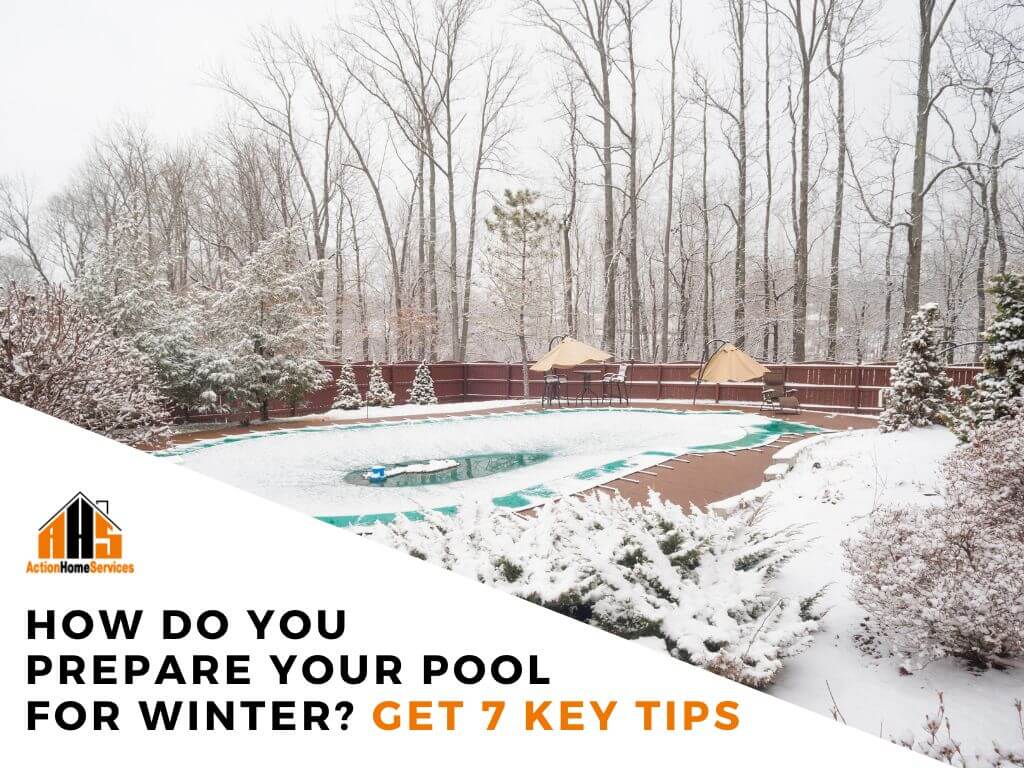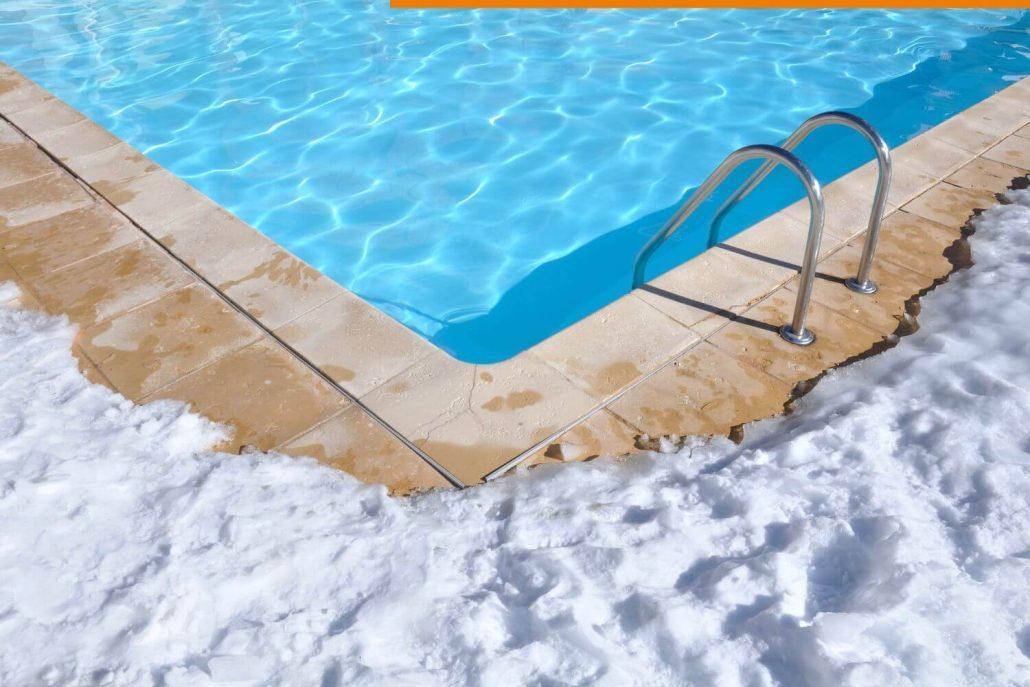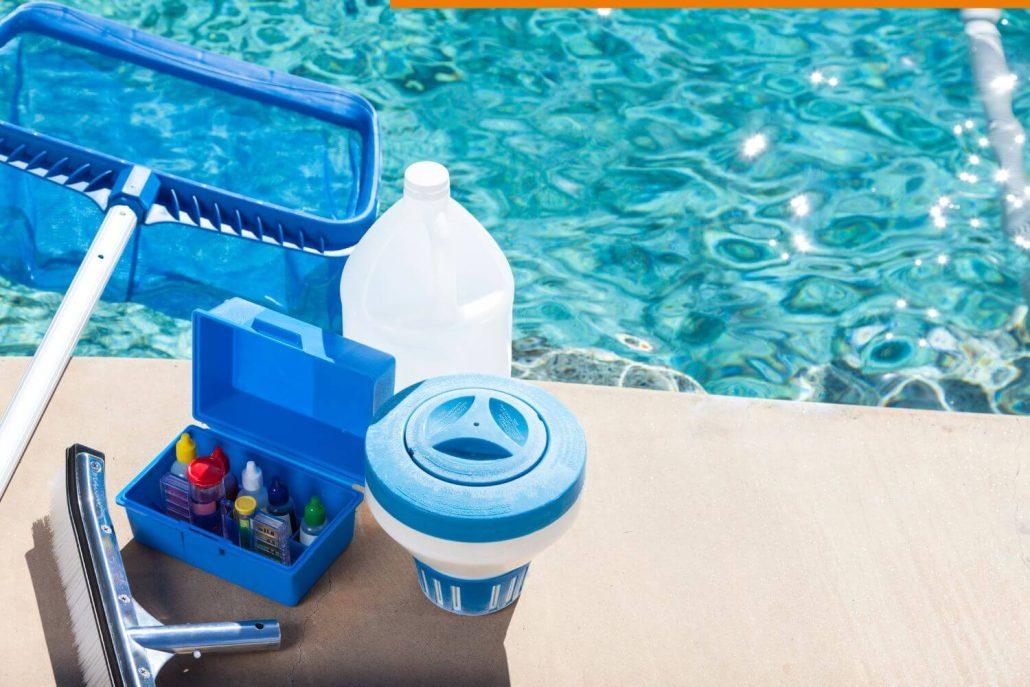
Winterizing your pool is essential to ensure its longevity and usability. Canadians know the harshness of the winter season, and to combat freezing temperatures, snow, and debris accumulation, you need to prepare your pool for the season. Winter pool maintenance can be a daunting task, but with our pool winterization guide, you can learn how to winterize your pool effectively and keep it in great shape for the next swim season. If you are unsure how to winterize your pool yourself or would prefer professional assistance, we recommend instilling the help of a pool closing company.
Action Home Service offers premium pool installations that will transform your property across Toronto and the GTA!
1. Lower The Water Level & Drain Pool Equipment
Reducing the water level in your pool and draining the pool equipment is crucial to prevent damage from freezing temperatures during winter. Here's what you need to know:
Step 1: Lower The Water Level
Use a submersible pump or a siphon to lower the pool water level. The level should be below the skimmer and the return jet. You can also use a pool cover pump to remove excess water. Once the water level is lowered, turn off the pump and filter.
Step 2: Drain Pool Equipment
Drain the pool equipment, including the filter, heater, pump, and chlorinator. Follow these steps to do it safely:
- Turn off the power to the pool equipment.
- Remove the drain plugs and allow the water to drain out.
- Open the air relief valve on the filter to allow any remaining water to drain out.
- Remove any remaining water from the pump and the chlorinator.
- Store drain plugs in the pump basket or skimmer for easy access in the spring.
- Make sure all pool equipment is completely dry before storing, as any remaining water could cause damage during freezing temperatures.
Note: If you have a pool heater, it's best to seek professional help to winterize it properly.
2. Clean & Store Pool Accessories
Before storing your pool toys, covers, and ladders, it's crucial to clean them thoroughly. Use a mild, non-abrasive cleaner and a soft brush or cloth to remove any dirt or debris. Rinse the items with a hose and allow them to dry completely before storing them.
When storing your pool accessories, it's important to keep them in a cool, dry place, away from direct sunlight. This will help prevent fading, cracking, and other damage. Consider using storage containers with lids to keep items clean and organized.

3. Cover Your Pool
Installing a winter pool cover is an essential step towards protecting your pool during the harsh Canadian winters. The cover will offer protection against debris, sunlight, and freezing temperatures, ensuring your pool stays in good shape throughout the winter months. Action Home Services is the top pool builder across Toronto and the GTA, creating a unique oasis in your backyard that you will want to enjoy for years to come. Choose from one of the winter pool covers below to protect your custom pool from the forthcoming freezing temperatures!
Types Of Winter Pool Covers
Mesh: Allows water to pass through while keeping debris out. Easy to install, lightweight, and durable.
Solid: Blocks sunlight and prevents algae growth. Protects against debris and harsh weather conditions
Automatic: Covers and uncovers the pool with a push of a button. Convenient and easy to use, reduces maintenance time and costs
4. Winterize Your Pool Plumbing
Winterizing your pool plumbing is crucial to protect it from freezing temperatures. Freezing water expands, which can cause pipes and fittings to crack or burst. Follow these steps to winterize your pool plumbing:
- Turn off the pool pump and filter.
- Drain all the water from the pool equipment, including the pump, filter, heater, and chlorinator.
- Blow out the pool plumbing using an air compressor. This will remove any remaining water from the pipes and fittings.
- Add pool plumbing antifreeze to the lines to prevent any remaining water from freezing. Use a funnel to pour the antifreeze into the skimmer.
- Plug the pipes and skimmer with winterizing plugs to keep debris out of the lines.
- Double-check that all valves are in the closed position and the pool equipment is protected from the elements.
Note: Don't forget to remove the winterizing plugs and flush out the lines before starting up your pool again in the spring.

5. Maintain Your Pool Cover Throughout Winter
Winter pool cover maintenance should be performed regularly to prevent debris, snow, and ice accumulation. Removing debris from the cover using a broom or leaf blower can prevent damage and prolong its lifespan. Additionally, checking the water level of your pool regularly can ensure that it remains below the skimmer level, preventing water from entering your pool cover and causing damage.
If your pool cover becomes damaged, it's essential to repair it promptly to prevent further damage and ensure its effectiveness. Small tears or holes can be repaired using a pool cover patch kit, while larger damages may require professional repair or replacement.
6. Monitor & Adjust Chemical Levels
During winter, it's essential to monitor and adjust the chemical levels in your pool regularly. Even though the temperature drops, chemical imbalances can still occur. Maintaining the water chemistry balances during winter is necessary to keep your pool in excellent shape.
Pool water balance during winter is crucial for ensuring your pool is safe and clean when spring comes. Low chemical levels can result in the growth of bacteria, algae, and other microorganisms. On the other hand, high chemical levels can irritate skin and eyes, damage your pool equipment, and reduce the efficiency of your winterizing chemicals.
To avoid these issues and keep your pool water well-balanced during winter, test the chemical levels at least once a month. Appropriate chemical testing helps determine what chemical adjustments to make and at what levels. Make sure to use winter-specific pool chemicals when testing and adjusting your pool water.
Winter Pool Chemical Levels
Here's a breakdown of the ideal chemical levels for winter pool maintenance:
pH: Ideal range is 7.2-7.8
Alkalinity: Ideal range is 80-120 ppm
Chlorine: Ideal range is 1-3 ppm
Cyanuric Acid: Ideal range is 50-70 ppm
Make sure to use a reliable test kit or invest in a digital pool water tester to ensure accurate results. Always add chemicals to the pool in small increments, allowing 4-6 hours before retesting the pool chemistry. Repeat this process until you achieve the ideal chemical range.

7. Remove Snow From Your Pool Cover
When winter arrives, it's essential to regularly remove any snow accumulation from your pool cover. Too much snow can cause the cover to stretch, tear or even collapse under its weight, leading to costly damage to your pool and its accessories. To properly remove snow from your pool cover, follow these winter pool maintenance tips:
- Use a pool cover pump: Before removing snow from your pool cover, use a pool cover pump to remove standing water on top of the cover. Start at the top of the cover and work your way down, using a long-handled pool brush to sweep away any excess water.
- Use a snow rake: Carefully use a snow rake to remove the snow from your pool cover. Avoid using metal tools or shovels, as they can damage the cover or cause punctures. Instead, opt for a plastic or foam rake, which is gentle on the cover. Always rake snow off in a straight line, starting from the shallow end and moving to the deep end.
- Remove ice carefully: If there is ice on your pool cover, avoid using any sharp objects to break it up. Instead, fill a bucket with warm water and pour it over the ice until it melts. Once the ice has melted, use a snow rake to remove any remaining snow and water.
Safety is paramount when winterizing your pool. Always follow the recommended guidelines and precautions to avoid any potential hazards. Protect yourself and others by wearing protective gear when handling chemicals and draining equipment, and avoid slipping on wet surfaces around the pool.


